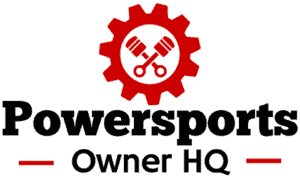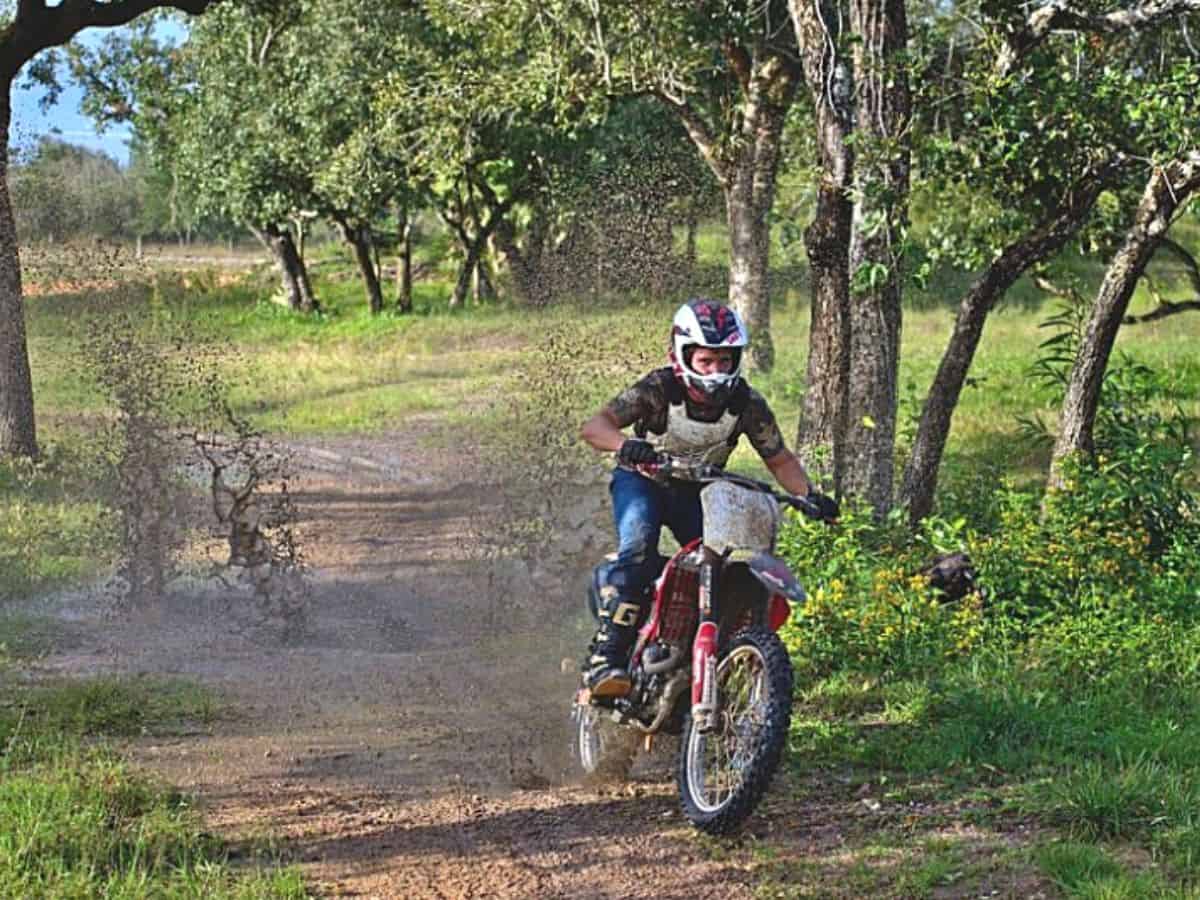Whether you’re a new rider trying to figure out where to start or an experienced rider looking to level up, one key dirt bike spec you need to pay attention to is cubic centimeters (CCs).
As this measurement refers to the displacement or volume of the dirt bike’s engine, which directly relates to how much power it can produce.
Choosing the right CC that matches your current skill level is one of the most important decisions you can make when purchasing and riding dirt bikes safely.
An engine that’s too powerful can be extremely dangerous if you lack the proper skill, strength, and reaction times to control the bike.
On the other hand, starting too small can mean you quickly outgrow the dirt bike’s capability on trails and tracks.
So to help take the confusion out of CCs, we created this blog post that looks at common dirt bike CCs, the differences in performance you can expect, and recommendations tailored specifically to riders of all levels.
What CC Means on Dirt Bikes
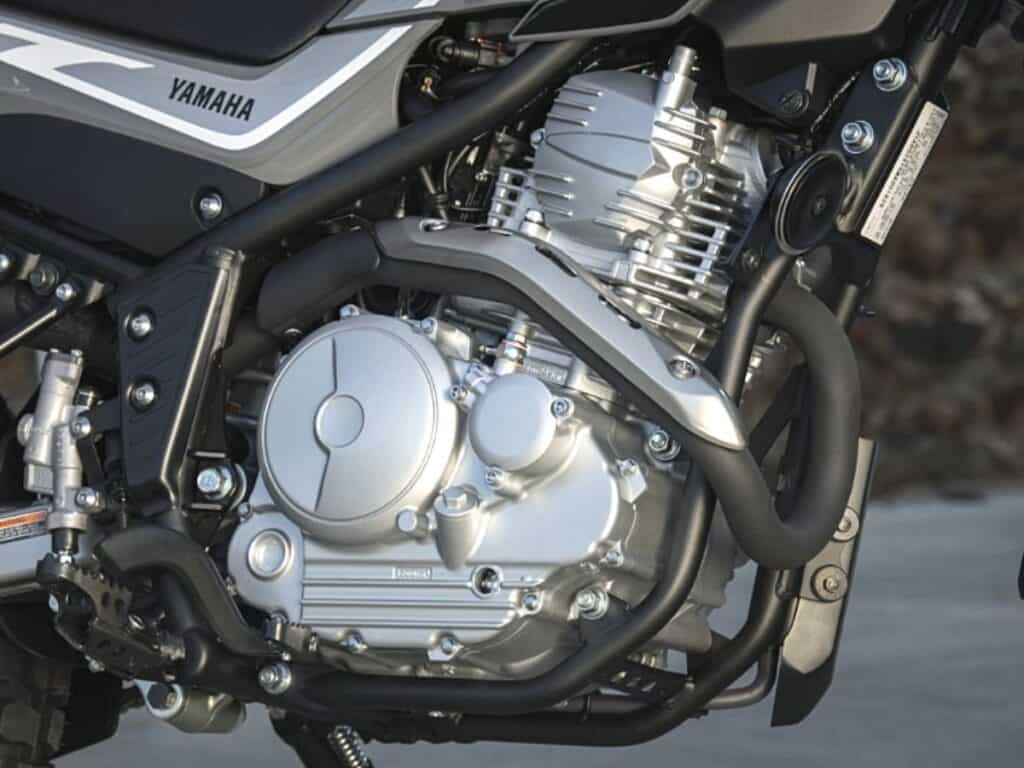
When shopping for dirt bikes, you’ll notice that their engines are commonly categorized by CC, which stands for cubic centimeters.
This specification refers to the engine’s total volume.
Essentially, CC is measuring the engine’s displacement – how much air and fuel it can draw in and combust with each revolution.
The more volume an engine displaces, the larger its cylinders are and the greater potential power it offers.
As a general rule, the more CCs a dirt bike has, the faster acceleration and top speeds it’s able to offer, due to higher torque and horsepower ratings.
50-125cc bikes are on the low end for displacement and power, while 450cc models used in competitions have extremely large, powerful engines tuned for maximum performance.
While it seems simple that bigger CC numbers equal bigger power, you have to match engine size appropriately to your skill level.
This is because an amateur rider will find a 450cc motocross bike impossible to control safely compared to a trail-friendly 250cc bike.
That’s why paying attention to both CCs and intended bike use is so important in your selection process.
Dirt Bike Engine Sizes Explained
To illustrate this here are the most common dirt bike CCs broken down by size:
50cc-90cc
- Typically kid’s bikes with small, low-power engines.
- Best for young riders ages 4-7 first learning motor skills.
- Ideal for riding backyard tracks and trails with parental guidance.
125cc-250cc
- Considered starter bike range for teens and adults.
- Enough power for trails and small jumps without being overwhelming.
- Allows new riders to gain necessary skills before moving to more powerful bikes.
250cc-400cc
- The most common engine sizes for intermediate-level trail and motocross bikes.
- Provides experienced riders enough speed to tackle motocross tracks, hill climbs, and longer trails.
- Enough power to handle bigger jumps, fast cornering, and high top speeds.
400cc-450cc
- Large engine sizes reserved for expert and professional riders only.
- Tons of raw power but extremely difficult to control without proper skill.
- Best for extremely skilled riders riding on advanced technical trails or racers competing on professional circuits.
Ultimately the powersports market contains dirt bikes ranging from small 50cc kid bikes to massive 450cc motocross models.
Because of this, it’s important to be honest with yourself and your capabilities to make sure you don’t buy more CCs than you can safely handle.
Matching Dirt Bike Engine CCs With Rider Skill Level
With a wide range of dirt bike engine sizes available, narrowing down the right CC for your skill level and needs involves honestly assessing your current capability and experience level.
So to help with this, we created the below general guidelines that will steer you toward appropriate bike sizes, based on skill level and intended use.
Beginner Riders
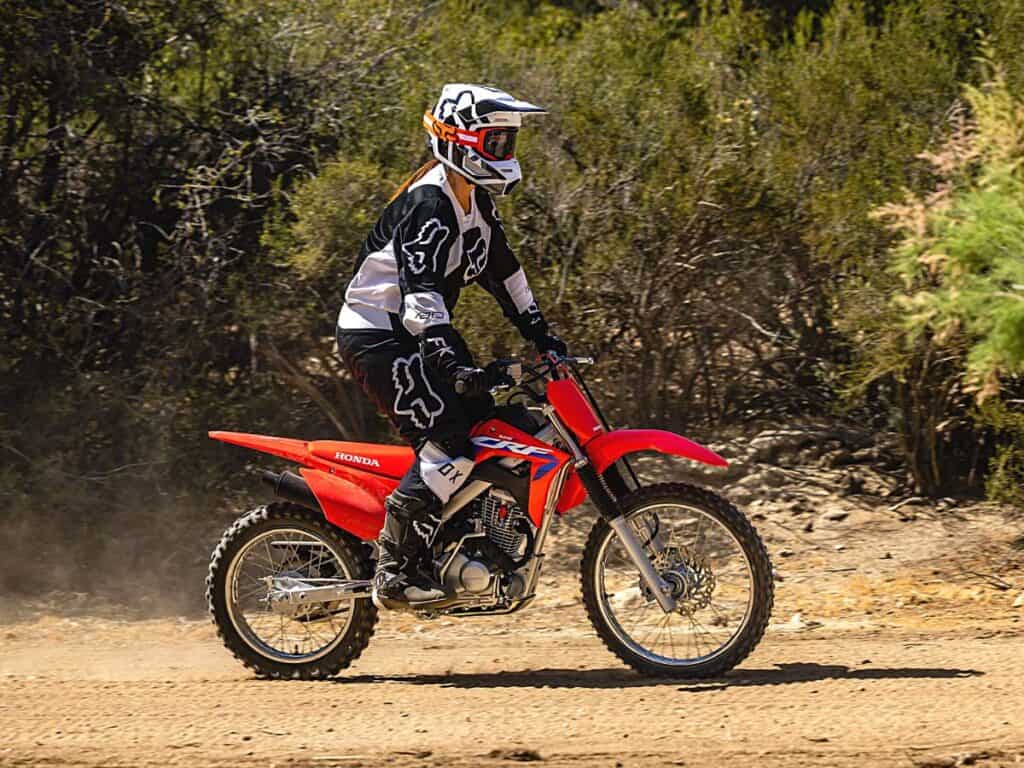
As a brand-new rider who’s never thrown a leg over a dirt bike before, choosing your first bike to learn on is an important decision that will impact your safety and skill progression.
It can be tempting to buy a powerful high-performance motocross bike right off the bat, but that would be a big mistake for a beginner.
You first need to develop fundamental techniques on an appropriately sized starter bike before moving up to more engine power and speed.
For true first-time riders, I recommend kids starting with a 50cc bike and teens or adults starting with either a 125 or 250cc bike depending on rider size, with a mild two-stroke or four-stroke engine.
These bikes may seem underpowered compared to the advanced 450cc machines prevalent at motocross tracks.
However, their lightweight frames, low seat height, narrow width, and low output make them perfect for beginners to safely develop core motorcycle skills without getting into trouble.
Riders as young as 4 years old generally start on 50cc bikes, while teens and adults may feel more comfortable beginning on either 125cc or 250cc two-stroke or four-stroke trail bikes.
Either way, the priority is learning proper throttle control, clutch techniques, shifting timing, steering, braking, and weight distribution before worrying about speed or terrain difficulty.
It’s crucial not to size up in engine power until you’ve spent considerable time mastering bike handling basics.
Rushing into an intermediate-level bike too early can overwhelm your capabilities and lead to losing control or crashing.
Plus, the fact of the matter is that 125 or 250cc bikes are plenty powerful enough for new and even seasoned riders, as they can easily reach speeds of 60 miles an hour or more.
Bottom line, have patience, ride within your means, and gradually work your way into more power as your skills, reactions, and fitness level improve over time.
Intermediate Riders
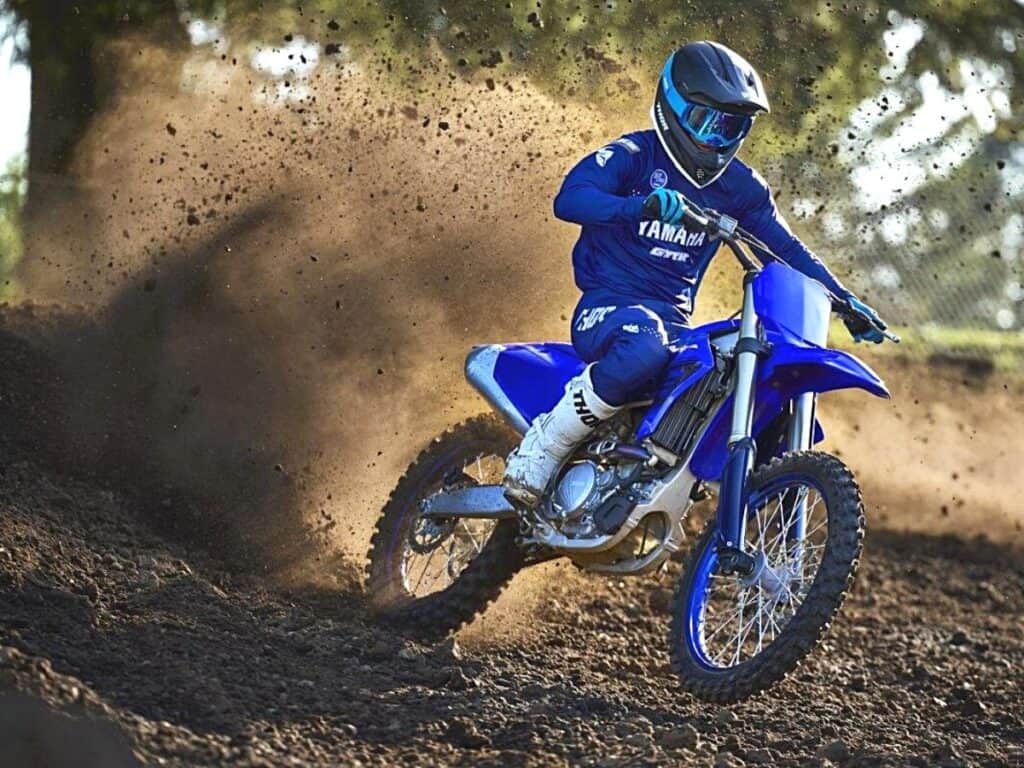
Once you’ve spent adequate time building competency on small-displacement bikes as a beginner, you’ll eventually be ready to graduate to an intermediate-level dirt bike in the popular 250cc to 400cc range.
250cc to 400cc dirt bikes is where you see most recreational riders and amateur racers looking to up their speed, hill climbing, and jumping capabilities.
Stepping up into this class puts more power at your wrist to start tackling more challenging terrains and technical motocross tracks.
However, it’s crucial before moving up to these intermediate bikes that you’ve fully mastered motorcycle techniques first, including throttle manipulation, weight shifting, maintaining vision through corners, brake modulation, clutch feathering, and more.
If these skills aren’t second nature yet, it’s best to keep practicing on more forgiving bikes that allow for learning mistakes without consequences.
It’s also worth mentioning that intermediate models are heavier and taller, so you need to have the core body strength and leg extension to support the bike while stationary and muscling it through winding trails or around the track.
Remember it’s always best to buy a dirt bike tailored specifically for your height and weight to ensure proper control and balance.
As this will translate into confidence when you hammer the throttle out of the corners or maneuver out of a tricky situation on the trails.
Advanced / Expert Riders
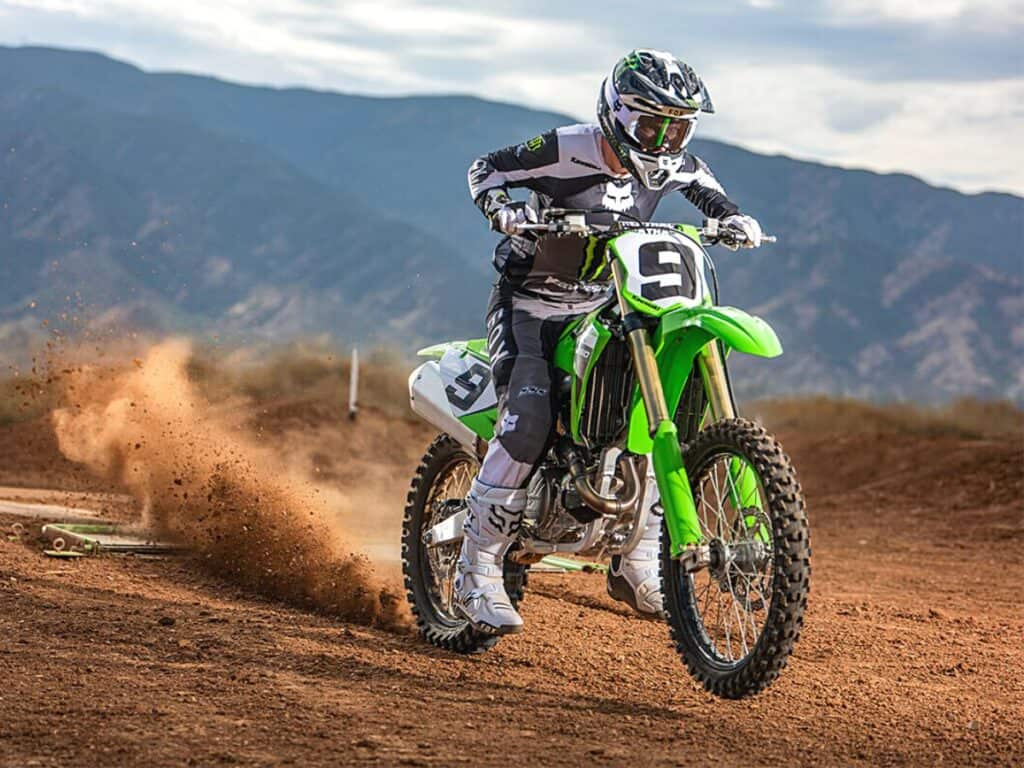
Once you’ve reached an advanced riding level with years of experience under your belt, you’ll have the option to size up to high-performance motocross bikes in the 400 to 450cc range.
400 to 450cc, professional-grade machines tuned for racing are no joke in terms of their immense power and sensitivity to throttle inputs.
They require tremendous strength, technique mastery, and lightning-quick reactions to handle everything these powerful engines output as you blast around the track.
Extreme caution is urged for intermediate riders eyeing these bikes too early before their skills are polished.
It’s crucial to resist the urge to size up to the “big boy bikes” that the pro riders use until you’ve fully outgrown the capability of 250cc to 400cc intermediate bikes.
We cannot stress enough how dangerously overwhelming these 400cc+ bikes can be for anyone lacking race-ready expertise.
Their ultra-light frames, meaty torque, and hair-trigger throttles demand complete machine harmony between rider and bike to avoid catastrophe.
Even the most seasoned amateurs can find themselves overmatched when jumping up to these elite motocross bikes used in competitions like AMA Supercross.
The sheer torque and tendency to wheelie under hard acceleration necessitates expert-level anticipation, reaction times, and familiarity with a bike’s personality.
As making even a minor mistake on one of these machines can quickly lead to a violent crash.
That’s why it’s so important to slowly graduate through bike sizes tailored to your growing expertise over a long period.
Stick With the Engine Size You Like
By the way, nothing says that you have to graduate up through the different engine and bike sizes, as your skill level and riding experience increase.
If you like your 125 or 250cc beginner bike, or your 250 to 400cc intermediate bike, there’s no hard and fast rule that you must graduate up.
Powersports and dirt bikes are all about the joy and freedom of the ride, and if you’re feeling great about your current setup, stick with it!
The bike that brings you confidence on the trails or the track is the one you should be riding.
Key Dirt Bike CC Takeaways
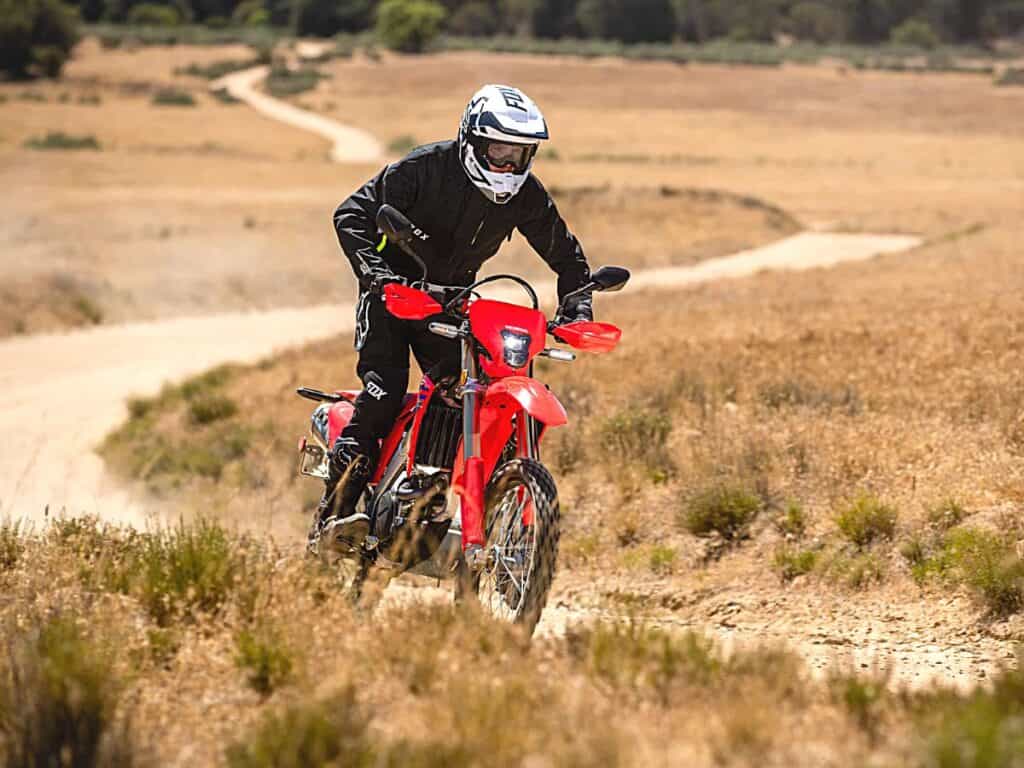
When navigating the dirt bike market and considering what CC engines are appropriate for you, the most important consideration is matching size realistically to your current skill and capability.
To do this, you should keep in mind these key takeaways when shopping for a new dirt bike:
- Cubic centimeters (CCs) refer to the total displacement volume of a dirt bike engine, directly correlating to power output.
- 50-125cc bikes are intended for beginner kids and adult riders to safely develop skills.
- Intermediate 250cc-400cc bikes offer more power to progress beyond beginner terrain.
- 400cc+ models are strictly designated only for expert-level riders and racers.
- Attempting to ride too large and powerful of a bike for your ability dramatically escalates safety risks.
- Progress through appropriate bike sizes slowly as your expertise and experience increase over the years.
- Don’t rush into more CC; take your time perfecting techniques on smaller bikes first.
While it may be tempting to size up for the prestige or bragging rights, there are no shortcuts to properly progressing through incremental dirt bike sizes tailored to your experience level.
Be honest with yourself, ride within your limits, and focus on building fundamental expertise before advancing.
Remember the end goal is expanding your riding horizons – not a trip to the emergency room!
Got Questions? We’ve Got Answers
A 125cc dirt bike is typically suitable for teenagers and adults starting from around 15 years old, depending on their riding skills, physical size, and experience.
A 250cc dirt bike can reach top speeds between 55-85 mph, based on the bike’s model, terrain, and rider’s experience.
A 250cc dirt bike is not too small for most riders; it balances power and manageability, making it suitable for both beginners and experienced riders.
A 250cc dirt bike is a great choice for beginners, as it strikes a good balance between power and control, providing enough speed to excite without overwhelming new riders.
While 125cc 2-stroke dirt bikes are not the fastest, they are fast and powerful, with top speeds around 60 mph. They are great for beginners and are best known for their quick acceleration and nimble handling.
A 250cc 2-stroke dirt bike is fast, capable of reaching top speeds of around 70 mph with rapid acceleration and a high power-to-weight ratio.
Recent Posts
Is Can-Am Better Than Polaris? This question has been debated for years, sparking intense debates in off-road communities and showrooms. As two titans in the world of ATVs and UTVs, Can-Am and...
Whether you're an adult looking for a new adventure or introducing your kids to the sport, finding the best beginner dirt bike is crucial to kick-start your off-road journey on the right...
